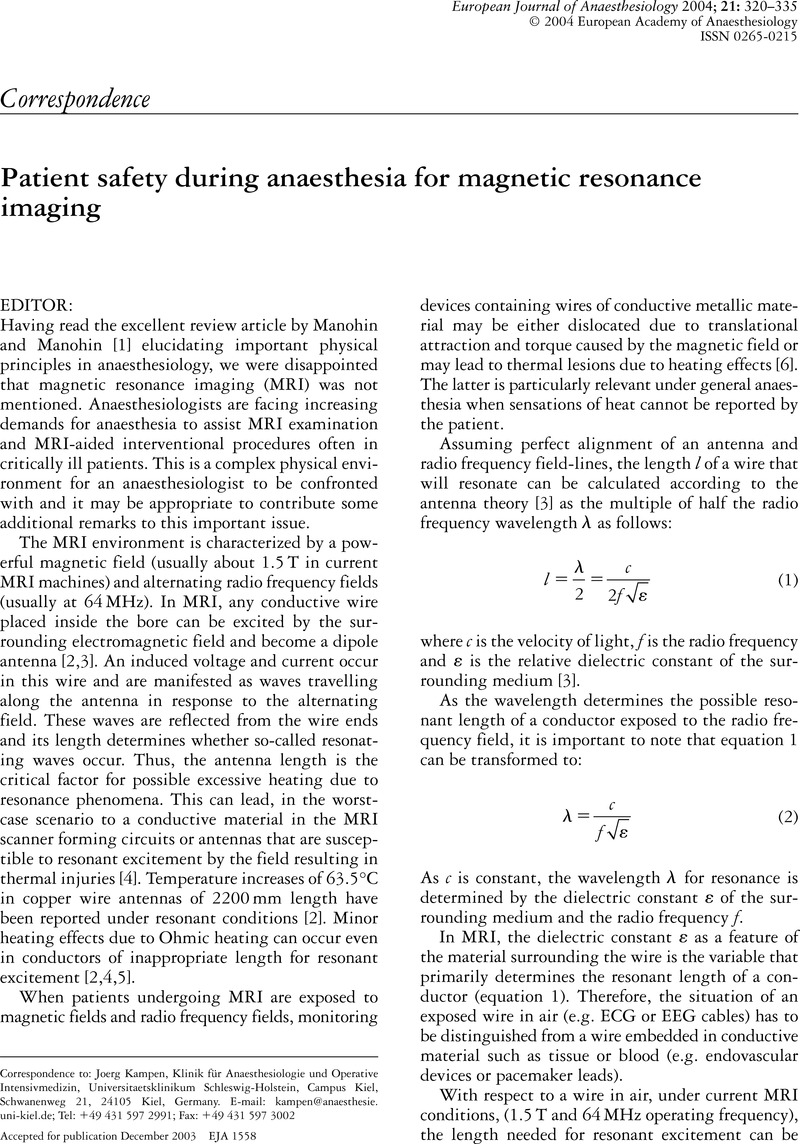No CrossRef data available.
Article contents
In off-pump cardiac surgery, neuromuscular monitoring should be mandatory and immediate extubation is feasible
Published online by Cambridge University Press: 23 December 2004
Abstract
An abstract is not available for this content so a preview has been provided. Please use the Get access link above for information on how to access this content.

- Type
- Correspondence
- Information
- Copyright
- 2004 European Society of Anaesthesiology
References
Cammu G, De Keersmaecker K, Casselman F, et al. Implications of the use of neuromuscular transmission monitoring on immediate postoperative extubation in off-pump coronary artery bypass surgery. Eur J Anaesthesiol 2003; 20: 884–890.Google Scholar
Eriksson LI. Evidence-based practice and neuromuscular monitoring: it's time for routine quantitative assessment. Anesthesiology 2003; 98: 1037–1039.Google Scholar
Hemmerling TM, Choiniere JL, Fortier JD, Prieto I, Basile F. Immediate extubation after aortic valve surgery using high thoracic epidural anesthesia: a pilot study. Anesth Analg 2003; 97: 601.Google Scholar
Royse CF, Royse AG, Soeding PF. Routine immediate extubation after cardiac operation: a review of our first 100 patients. Ann Thorac Surg 1999; 68: 1326–1329.Google Scholar
Fortier JD, Choiniere JL, Basile F, Prieto I, Hemmerling TM. Immediate extubation (Ultra fast track anesthesia) after off-pump cardiac surgery: opioid-based analgesia versus high thoracic epidural analgesia. Anesth Analg 2003; 96: SCA 36.Google Scholar
Fletcher D, Pinaud M, Scherpereel P, Clyti N, Chauvin M. The efficacy of intravenous 0.15 versus 0.25 mg kg−1 intraoperative morphine for immediate postoperative analgesia after remifentanil-based anesthesia for major surgery. Anesth Analg 2000; 90: 666–671.Google Scholar


